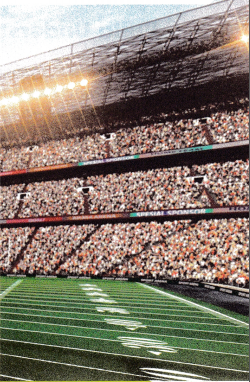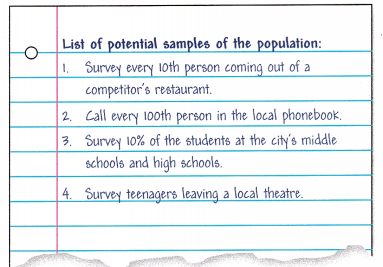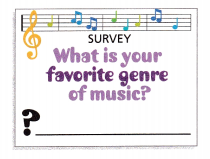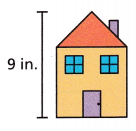We included HMH Into Math Grade 7 Answer Key PDF Module 12 Lesson 1 Understand Representative Samples to make students experts in learning maths.
HMH Into Math Grade 7 Module 12 Lesson 1 Answer Key Understand Representative Samples
I Can identify the population and sample of given survey scenarios, and determine whether the sample is random and/or representative of the population.
Spark Your Learning
In the fall, the residents of a large city will be voting on whether to use state funding to build a new football stadium. A research analyst wants to know the opinion of all the registered voters of the city in order to predict the outcome of the upcoming vote. Without polling all of them, how can the research analyst be sure that the poll represents the opinion of the registered voters?

Answer:
Turn and Talk Does it make sense for the research analyst to poll every registered voter in the city about using state funding to build a stadium? Explain.
Answer:
Build Understanding
Question 1.
A chain restaurant is thinking of entering a city for the first time. The owners want to determine if the teenagers in the city like the kind of food served by the restaurant.
Connect to Vocabulary
When information is being gathered about a group, the entire group of objects or individuals considered for a survey is the population.
Connect to Vocabulary
A sample is part of the population that is chosen to represent the entire group.
A representative sample is a sample that has the same characteristics as the population.
When a sample does not accurately represent the population, it has bias.
A. In this case, what is the population the restaurant needs to survey? Is it reasonable for them to survey the entire population? Why or why not?
When a population is too large to survey, a subset of the population, or a sample, is used to represent the population. If the sample is representative, it can be used to infer data about the population. The restaurant owners made a list of possible samples.

Answer:
B. Which of the potential samples are more likely to be representative of the population? Why?
Answer:
C. Of the representative samples of the population, which is most representative of the population? Explain.
Answer:
D. Which of the potential samples are biased? Explain.
Answer:
A sample in which every member of the population has an equal chance of being selected is a random sample.
Question 2.
Aiden asks the survey question shown to determine what genre of music to play at an employee event.

A. He asks every tenth employee on a list of all employees. Is this sample random? Explain.
Answer:
B. Is the sample in Part A representative of the population? Explain.
Answer:
C. On Thursday, he asks every third employee that gets off the elevator on the fifth floor the survey question. Is this sample biased? Explain.
Answer:
D. Is the sample in Part C a random sample? Explain.
Answer:
Turn and Talk Does a random sample always generate a representative sample? Explain.
Answer:
Check Understanding
Question 1.
Isabella wants to know the favorite sport of the students in her school. She randomly asks every fifth person entering the football game Friday night. Is this sample biased? Explain.
Answer:
Question 2.
Noah assigned a number to each of the 200 students in seventh grade. He put the numbers in a bag. Noah randomly chose 30 numbers and surveyed those students. Identify the population and sample.
Answer:
Question 3.
Wyatt wants to poll the opinion of a neighborhood about safety. Give an example of a biased sample. Justify your answer.
Answer:
On Your Own
For Problems 4-5, use this survey information; every hundredth resident of voting age listed on the county census was surveyed about building a library.
Question 4.
Identify the population and sample.
A. Population: ________________
Answer:
B. Sample: _______________
Answer:
Question 5.
Reason Is the sample random? Is the sample representative of the population? Explain.
Answer:
For Problems 6-7, identify the population and sample. Determine whether each sample is random and whether it is biased. Explain your reasoning.
Question 6.
Juanita surveys 50 adults at a local swimming pool during the summer to determine the favorite month of adults in her city.
A. Population:
_______________
Answer:
B. Sample:
_______________
Answer:
C. Random _______________
Answer:
D. Representative? _______________
Answer:
Question 7.
Cameron surveys every tenth student who walks into school to determine the favorite type of movie of students in his school.
A. Population: _______________
Answer:
B. Sample: _______________
Answer:
C. Random? _______________
Answer:
D. Representative? _______________
Answer:
Question 8.
Construct Arguments Addison surveys every 25th customer who leaves a grocery store to determine whether students at her school prefer to pack a lunch or purchase a lunch. Is her sample biased? Explain.
Answer:
I’m in a Learning Mindset!
What barriers block my understanding of representative samples?
Answer:
Lesson 12.1 More Practice/Homework
The president of a national soccer fan club, Abdul, wants to determine if the club’s 10,000 members are in favor of using club dues to make a new online video to support their team in the upcoming championship. He assigns a number to each member and uses a random number generator to choose 250 members to survey.

Question 1.
Identify the population and sample.
Answer:
Question 2.
Is the sample representative of the entire population? Explain.
Answer:
Question 3.
Suppose 212 of the 250 members in a random sample are in favor of using club dues to make a new video for their team. What can Abdul conclude about the results of the survey? Explain.
Answer:
Question 4.
Math on the Spot Determine whether the sample is representative or biased. Explain.
A. A teacher chooses the grades of 50 students at random from his classes to calculate the average grade earned in his class.
Answer:
B. Seventy-five people exiting a bookstore are surveyed to find out the average amount of time spent reading each day by people in the area.
Answer:
Question 5.
Open-Ended A random sample of 10 students and a random sample of 200 students are chosen from a student population of 1,200 students. Which sample do you think is more likely to be representative of the population? Explain.
Answer:
Test Prep
Question 6.
Jayla wants to know the favorite sports team of the adults in her city. Which survey method is representative of the population?
(A) Randomly survey 1,000 adults as they leave a professional basketball game.
(B) Randomly survey 2,000 adults in one neighborhood.
(C) Survey every 100th adult customer who enters the local grocery store.
(D) Survey every 20th student who enters the high school.
Answer:
For Problems 7 and 8, determine whether each situation does or does not show bias.
Question 7.
Haley wants to know if people use the store’s bags or bring their own
reusable bags. She surveys every tenth person who leaves a grocery store.
This situation (does / does not) show bias.
Answer:
Question 8.
Josiah wants to know the favorite pet of adults in his city. Josiah assigned a number to each of the 200 people on the list to adopt a dog from a dog shelter. He puts the numbers in a hat. Josiah randomly chose 40 numbers and surveyed those people.
This situation (does / does not) show bias.
Answer:
Question 9.
Fayard wants to know the favorite instrument for students in his school. He puts the names of all the students in a jar, draws 5 names, and surveys those students. Suppose that Julia conducts the same survey in the same way, but she draws 15 names. Which method is more representative? Explain.
Answer:
Spiral Review
Question 10.
The drawing is a scale drawing of a house. If the scale is 2 inches = 4.5 feet, what is the actual height of the house? Round to the nearest hundredth.

Answer:
Given,
2 inches = 4.5 feet
1 inch = 4.5/2 = 2.25 feet
9 inches = 9 × 2.25 = 20.25 feet
Question 11.
The circumference of a circle is 50.24 centimeters. What is the area of the circle? Use 3.14 for π. Round to the nearest hundredth.
Answer:
Given,
The circumference of a circle is 50.24 centimeters.
circumference = 2πr
2πr = 50.24
2 × 3.14 × r = 50.24
6.28 × r = 50.24
r = 50.24/6.28
r = 8 cm
Area = πr²
A = 3.14(8)²
A = 3.14 × 64
A = 200.96 sq. cm